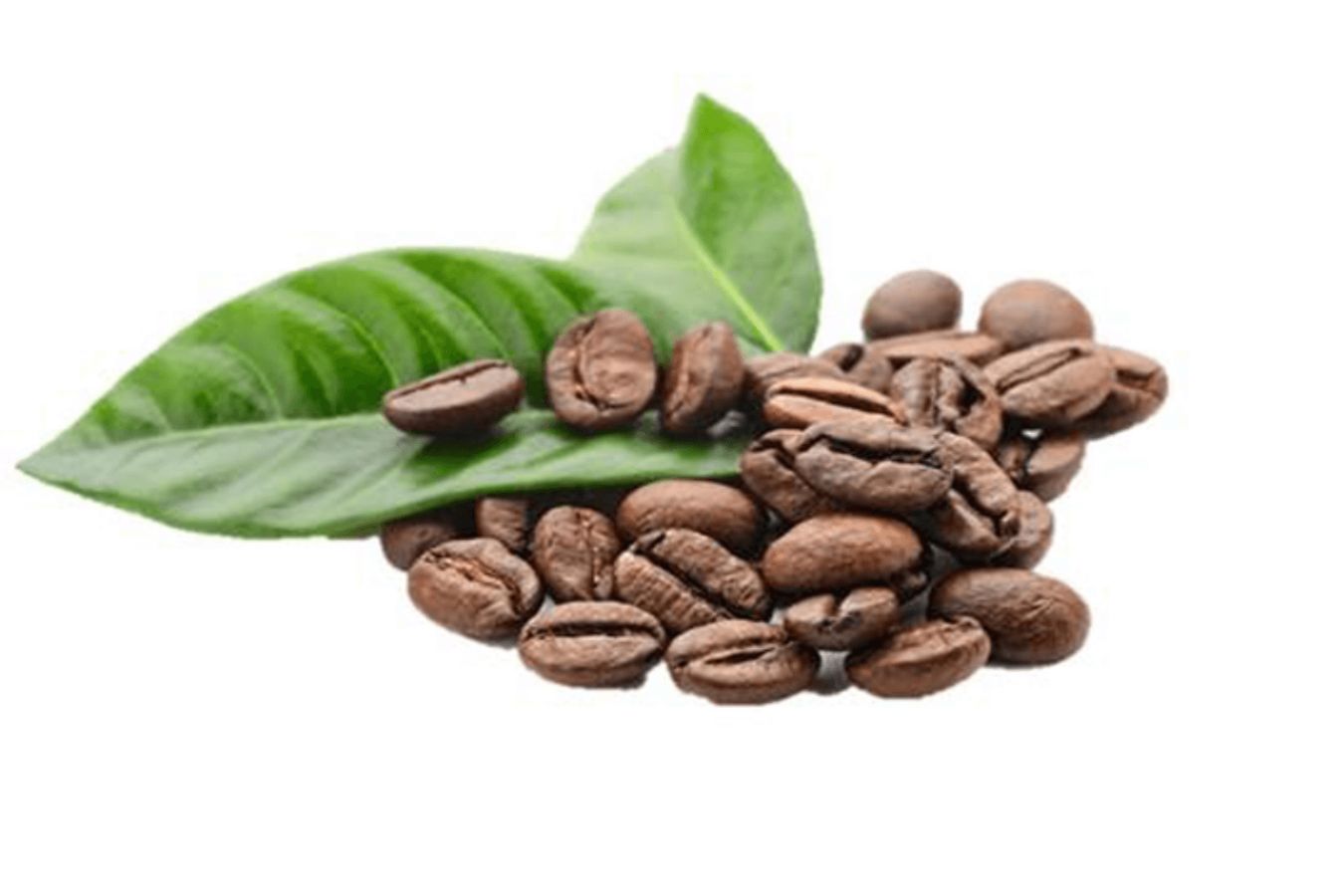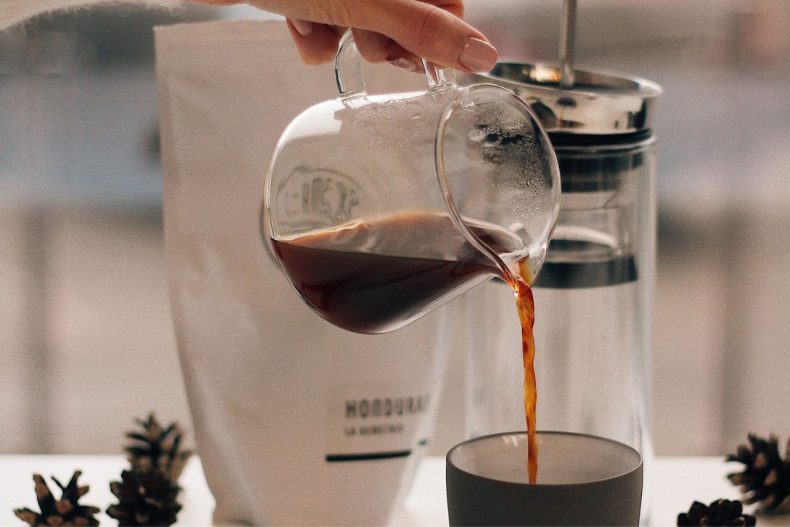
12 Reasons Why Coffee Tastes Diminished
Seeds are not fresh enough
The state of the bean material influences every coffee manufacturing step and the ultimate brewing result.
However, there is no such thing as a magical coffee bean that can indefinitely preserve the flavor’s freshness. Sometimes there are batches of seeds that appear to be extremely tasty. Still, no one realizes that they are progressively losing their taste due to not being utilized to prepare at the appropriate moment.
The effects of the coffee’s flavor can be explained by looking at how the beans are processed: Coffee beans produce a lot of CO2 inside the grain texture when roasted and processed at high temperatures. This CO2 will eventually leak out and escape to the outside.
The coffee bean’s flavor becomes more “bland” as the CO2 escape time increases. As a result, pay close attention to batches of seeds that have not been properly stored or left unattended for an extended period; the mixing results will most likely not be as predicted.
According to statistics, coffee beans lose 10% of their natural flavor after 24 hours of exposure to ambient air at room temperature due to CO2 loss. 10% may appear insignificant, but it is an “alarming” number for coffee connoisseurs!
Is it a waste of time? Yes. However, to retain the inherent flavor of your cup of coffee, you must use new ingredients; there is no way to save the old beans.
So, keep in mind that buying many coffee beans to stock up is not a good idea. When you go shopping, only take as many seeds as you’ll need for the next two weeks. A one-week use cycle is ideal if possible, as it ensures that the beans are always fresh for brewing.
Also, pay attention to the complete processing/roasting date mentioned on the box, rather than simply the expiration date, when purchasing coffee beans. To get the best coffee flavor, let the beans for at least four days after preliminary roasting to allow them to change and develop a more robust flavor.
Bad coffee beans:
Bad coffee beans
The beans are roasted the wrong way
Roasted coffee beans, roast coffee beans
This is rare with commercially available items, but it frequently happens when you prepare and roast raw coffee beans.
You must adhere to tight and meticulous temperature stability guidelines throughout the roasting process of coffee beans. If you don’t want your roast coffee beans’ efforts to go to waste, you must carefully evaluate the environment, conditions, and preliminary processing instruments.
Even the pros can make blunders and muck things up if they don’t have enough expertise or if bad luck strikes. Yet, even in a supermarket, it is possible to purchase a pack of coffee beans that tastes blander than typical due to improper roasting.
The solution: If you got coffee beans from somewhere else, you’d have to accept your fate and buy another pack the next time. If you’re making your roast, repeat the instructions to ensure the recipe is proper, and inspect the utensils as well.
If you don’t want to use that damaged packet of coffee any longer, don’t throw it away immediately; instead, propose it to your friends to check if anyone has tried it.
Coffee is a bean that comes in various flavors, and everyone’s taste is different. So, maybe someone in my group of close pals enjoys this “deviated” flavor shade?
Buy poor-quality seeds
You get what you paid for; therefore, if you drink coffee prepared from low-cost beans, don’t expect it to taste good. It’s hard to believe that a low-cost product is developed and meticulously cared for throughout the roasting and pre-processing procedure.
What to do about it: Find a reliable and high-quality coffee bean brand, conduct market research, and read reviews from competitors. Pre-ground coffee, as well as unknown brands and origins, should be avoided.
In some situations, newbies to coffee may be confused about detecting the intrinsic flavor of nuts, particularly when the drink is prepared with Arabica rather than Robusta beans.
Robusta beans have a more tart flavor than Arabica beans. This is due to the grain’s intrinsic characteristics, not because Robusta is “inferior” and of lower quality than Arabica.
Grind the seeds too finely or too lightly.
When preparing the components, grinding the beans is also crucial in determining the standard flavor of your cup of coffee. After buffing, the qualities of the coffee powder must be moderate, not too fine, coarse, and massive.
What to do about it: Because no universal formula applies to all coffee cups globally, you must first grasp the essential qualities of each variety of coffee and the accompanying coarse/acceptable grind level. (Not to mention one’s personal preferences).
A cup of Espresso, for example, will typically require exceedingly fine and finely ground beans, whereas a cup of Cold Brew will need a tiny enough grain size, and a bit coarse is OK.
What to do about it: Because no universal formula applies to all coffee cups globally, you must first grasp the essential qualities of each variety of coffee and the accompanying coarse/acceptable grind level. (Not to mention one’s personal preferences).
A cup of Espresso, for example, will often require highly finely ground beans, while a cup of Cold Brew will only need a tiny enough grain size; a bit coarse is fine.
Miscalculation of temperature
Setting the correct temperature manually (without using a machine) for the entire brewing and preparation process is exceedingly challenging if you are inexperienced. Even baristas cannot guarantee that they will perform flawlessly and professionally in all situations.
Usually, a 96°C is appropriate for brewing and making coffee.
What is the significance of 96°C? Experts have established that coffee should only be brewed at a temperature close to boiling and that this guideline must be strictly followed.
The unique essences that make up the intrinsic aroma of coffee beans will be degraded immediately if you unintentionally touch the boiling temperature of 100°C or even higher. However, if the temperature isn’t high enough, your coffee will only taste half-baked compared to what you expected.
The fix: When brewing coffee, use a specialist thermometer for stoves and cookware to measure the water temperature frequently. Invest in an infrared thermometer (which measures laser heat without contact) or a dedicated coffee maker if your pocketbook is complete and you want greater convenience.
Coffee brewing water problem
Remember that water is a critical component in brewing and preparing coffee.
Perhaps the water from your tap tastes as pure as it always has. But who knows whether there are pollutants in the blend that haven’t been screened, causing undesirable reactions that influence the flavor.
Solution: To maintain the most consistent water quality, use purified water from a current filter system.
Dispensing equipment is not clean.
You should instantly change your thinking if you practice washing utensils like cups, containers, spoons, and so on after each cup of coffee. Any pollutants left on the utensils from not thoroughly washing them can significantly impact the quality of your coffee the next time you make it.
How to fix: Clean the utensils with soap and water, then dry them in an excellent location. To avoid any hygiene issues, check your water purifier regularly.
Dispensing tools are too old.
Coffee-making utensils will degrade over time, regardless of how excellent and sturdy the materials are, especially when exposed to extremes in temperature and climatic conditions.
It’s also tough to rapidly conclude that the coffee isn’t tasty because of this feature. There’s no easy way to tell. The only way to know for sure is to rule out all other possibilities before concluding that the problem is caused by outdated equipment.
How to remedy it: Don’t feel bad about taking a few days off to make up for it. Find and purchase a new set of equipment as soon as possible.
Choosing the wrong tool
If anything is too “urgent,” a temporary bowl can be used instead of a plate when cooking. However, things will not be so simple when it comes to preparing coffee.
Even the coffee cup, though, requires attention. Under no circumstances should you use a plastic cup. Instead, brew your coffee in a ceramic or glass mug, or use a stainless steel pitcher if you need to move fast.
How to fix it: If you’re a coffee connoisseur, ensure you have all of the essential and suitable equipment beforehand.
The timing is not correct
When making tea, it’s OK to skip a few minutes of brewing in the kettle. However, when it comes to brewing coffee, the time element plays a crucial role; sooner or later, all of this leads to unsatisfactory results.
On the other hand, the best time threshold for coffees made manually in boiling water will be an arbitrary figure. A one-minute gap is enough to sabotage the best cup of coffee you’ve ever had.
How to fix: When preparing manual coffee, the operator will require some experience to keep track of the situation and handle it as smoothly as possible.
Use more coffee than necessary.
It’s OK to buy a large quantity of coffee to keep in the cupboard, but using too much coffee for a single brewing and mixing session can leave you regretting your decision.
The fresher the coffee, as with other foods and drinks, the better the flavor, mainly when extracted from a machine or specialized brewing equipment.
How to fix: Brew just enough coffee for each time and need. Please don’t make a big batch and keep it in the fridge to consume over the day.
Personal taste changes
You can eventually move to a different flavor of coffee, no longer sticking to the day’s familiar recipe.
This is quite normal; adjusting to your new taste preferences takes time. Don’t waste time double-checking each stage of preparation and machinery; instead, just let things go organically.
